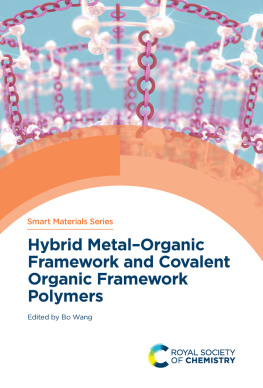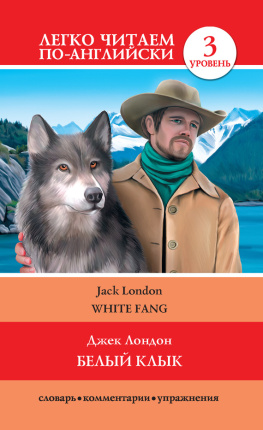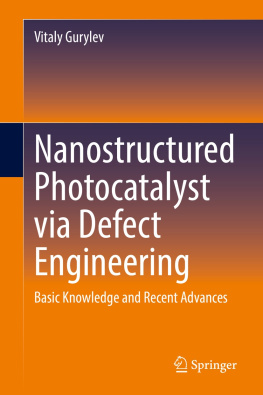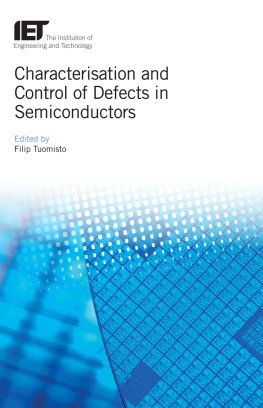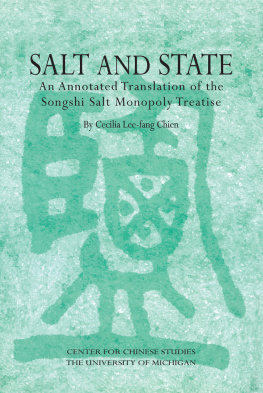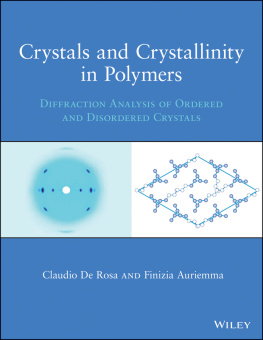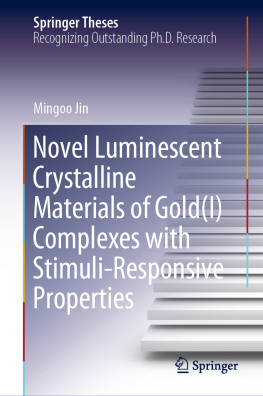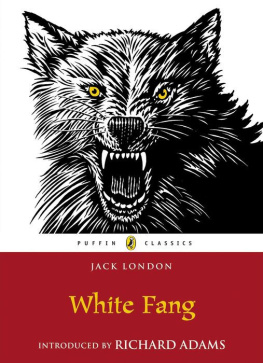Tsang-Tse Fang - Elements of Structures and Defects of Crystalline Materials
Here you can read online Tsang-Tse Fang - Elements of Structures and Defects of Crystalline Materials full text of the book (entire story) in english for free. Download pdf and epub, get meaning, cover and reviews about this ebook. year: 2018, publisher: Elsevier Ltd., genre: Children. Description of the work, (preface) as well as reviews are available. Best literature library LitArk.com created for fans of good reading and offers a wide selection of genres:
Romance novel
Science fiction
Adventure
Detective
Science
History
Home and family
Prose
Art
Politics
Computer
Non-fiction
Religion
Business
Children
Humor
Choose a favorite category and find really read worthwhile books. Enjoy immersion in the world of imagination, feel the emotions of the characters or learn something new for yourself, make an fascinating discovery.

- Book:Elements of Structures and Defects of Crystalline Materials
- Author:
- Publisher:Elsevier Ltd.
- Genre:
- Year:2018
- Rating:3 / 5
- Favourites:Add to favourites
- Your mark:
- 60
- 1
- 2
- 3
- 4
- 5
Elements of Structures and Defects of Crystalline Materials: summary, description and annotation
We offer to read an annotation, description, summary or preface (depends on what the author of the book "Elements of Structures and Defects of Crystalline Materials" wrote himself). If you haven't found the necessary information about the book — write in the comments, we will try to find it.
Elements of Structures and Defects of Crystalline Materials — read online for free the complete book (whole text) full work
Below is the text of the book, divided by pages. System saving the place of the last page read, allows you to conveniently read the book "Elements of Structures and Defects of Crystalline Materials" online for free, without having to search again every time where you left off. Put a bookmark, and you can go to the page where you finished reading at any time.
Font size:
Interval:
Bookmark:
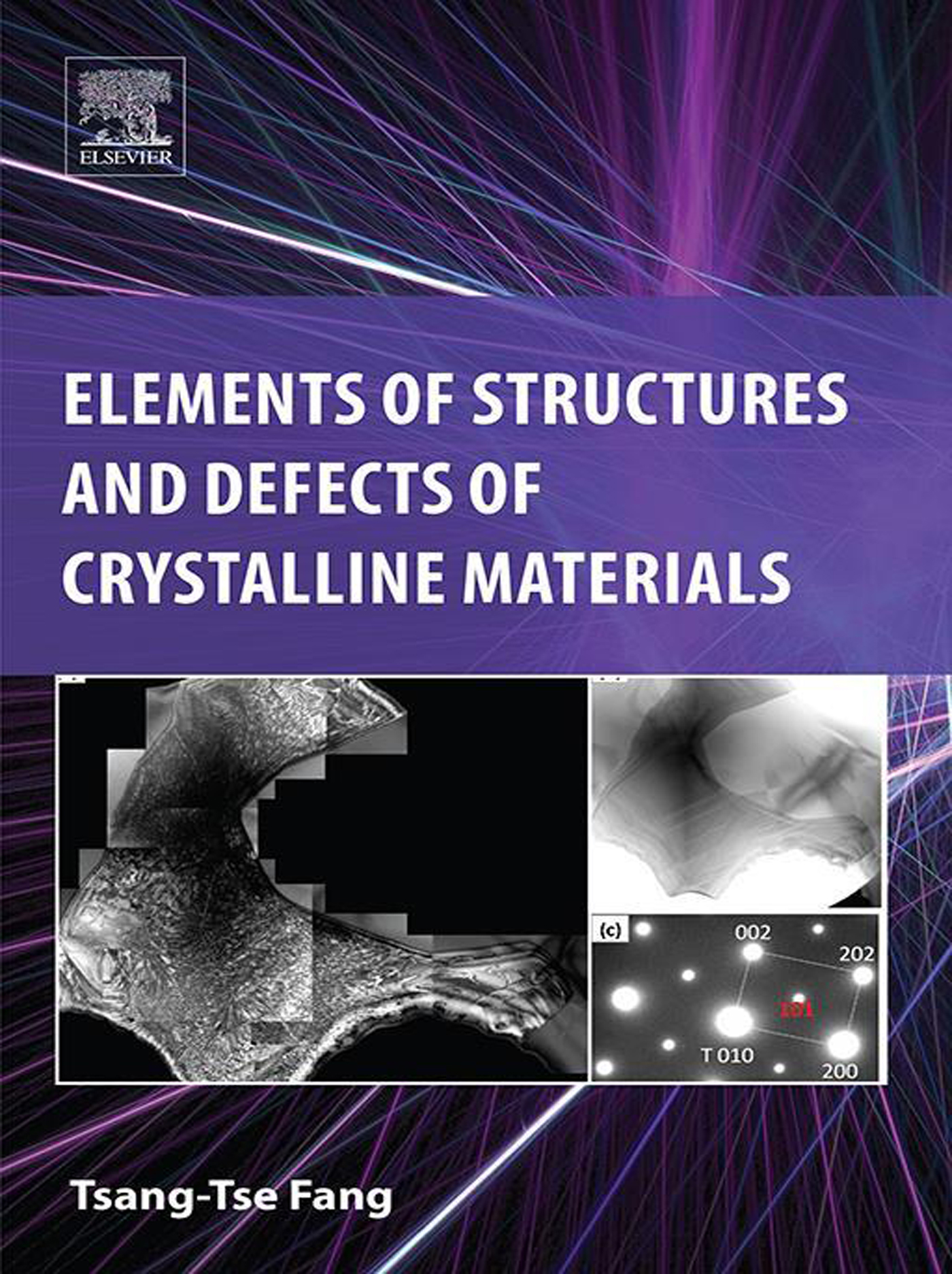
- Tables in Chapter 2
- Tables in Chapter 3
- Figures in Chapter 1
- Figures in Chapter 2
- Figures in Chapter 3
- Figures in Chapter 4
- Figures in Chapter 5
- Figures in Chapter 6
- Figures in Appendix II
Tsang-Tse Fang
National Cheng Kung University

Elsevier
Radarweg 29, PO Box 211, 1000 AE Amsterdam, Netherlands
The Boulevard, Langford Lane, Kidlington, Oxford OX5 1GB, United Kingdom
50 Hampshire Street, 5th Floor, Cambridge, MA 02139, United States
Copyright 2018 Elsevier Inc. All rights reserved.
No part of this publication may be reproduced or transmitted in any form or by any means, electronic or mechanical, including photocopying, recording, or any information storage and retrieval system, without permission in writing from the publisher. Details on how to seek permission, further information about the Publishers permissions policies and our arrangements with organizations such as the Copyright Clearance Center and the Copyright Licensing Agency, can be found at our website: www.elsevier.com/permissions.
This book and the individual contributions contained in it are protected under copyright by the Publisher (other than as may be noted herein).
Notices
Knowledge and best practice in this field are constantly changing. As new research and experience broaden our understanding, changes in research methods, professional practices, or medical treatment may become necessary.
Practitioners and researchers must always rely on their own experience and knowledge in evaluating and using any information, methods, compounds, or experiments described herein. In using such information or methods they should be mindful of their own safety and the safety of others, including parties for whom they have a professional responsibility.
To the fullest extent of the law, neither the Publisher nor the authors, contributors, or editors, assume any liability for any injury and/or damage to persons or property as a matter of products liability, negligence or otherwise, or from any use or operation of any methods, products, instructions, or ideas contained in the material herein.
British Library Cataloguing-in-Publication Data
A catalogue record for this book is available from the British Library
Library of Congress Cataloging-in-Publication Data
A catalog record for this book is available from the Library of Congress
ISBN: 978-0-12-814268-4
For Information on all Elsevier publications visit our website at https://www.elsevier.com/books-and-journals

Publisher: Matthew Deans
Acquisition Editor: Christina Gifford
Editorial Project Manager: Naomi Robertson
Production Project Manager: Vijayaraj Purushothaman
Cover Designer: Victoria Pearson
Typeset by MPS Limited, Chennai, India
As sparked by the discovery of the high Tc superconductor, growth and characterization of the materials mainly concerned with structures and defects are at the forefront of the research in materials science. The significance is further boosted on account of the subsequent discovery of the materials with so-called colossal properties, including magnetoresistance and dielectric constant. These materials are of perovskite or perovskite-like structures with transition metal ions on the B site and show an enormous variety of intriguing electronic or magnetic properties. This variety is not only related to their chemical flexibility concerning the defects, but also to a larger extent related to the complex character concerning the interplay between transition metal ions in certain coordinations and oxygen. Since these new emerging materials with multiple functions provide the most interesting and challenging topics in fundamental physics and the cutting edge of new technologies, they have drawn considerable worldwide attention of scientists with highly interdisciplinary backgrounds. However, research on these subjects is experiencing a superfast development and facing more completion. In response to these challenges, the scientists have to gain and grasp the desired knowledge in a short time. For most existing textbooks, they either are inadequate, focusing on one of the structures and defects, or are voluminous, including a wide variety of subjects. By contrast, this book is designed not only to be concise, yet comprehensive to thoroughly cover the fundamental principles of the structures and defects of crystalline materials, but also to provide deep insights into understanding the relationships of properties, defect chemistry, and processing of concerned materials. What is more, the issue concerning the significant effects on the properties of the functional oxides due to the crystal fields is missing from most of the existing related textbooks. This issue has been included in Surface Tension, Surface Stress, and Surface Free Energy of Interfaces. Finally, it has to be stressed that for most functional materials, to fully understand the interactions between properties and defect chemistry and processing, the knowledge concerning both structures and defects is necessary since they are correlated. This book has included the essence of the knowledge concerning the authors more than 30 years of research to provide deep insights into understanding the relationships of properties, defect chemistry, and processing.
This book is divided into two parts with six chapters. The first three chapters deal with the structures (Part I) and the remaining three chapters are concerned about the defects (Part II). Since the knowledge of the electron configuration of elements is necessary for understanding the nature of chemical bonding, it is discussed in the first chapter. This chapter is by no means intended to be comprehensive but to lend support to the aspects that are fundamental to the . Moreover, several materials being still under intensive investigation have been illustrated to provide deep insights into understanding the effects of the relationships of processing, structures, and defects on the material properties.
The defects of materials are explored in Part II. , Line Defects in Crystalline Solids, essentially covers in ample detail the fundamentals of the characteristics of dislocations, wherein physics and the atomic mechanics of several issues have been described in detail. In view of the significant influence of the morphologies including size, shape, and distribution of grains and phases on the microstructure evolution and in turn the properties of materials, the final chapter focuses on the fundamentals of interface energies including single-phase (grain) boundary and interphase boundary, wettability determining the morphologies of phases, and the change of surface stress at a curved surface leading to the kinetic processes like Ostwald ripening and sintering. The distinction between surface energy, surface tension, and surface stress of liquids and solids in terms of atomic viewpoint is updated.
Font size:
Interval:
Bookmark:
Similar books «Elements of Structures and Defects of Crystalline Materials»
Look at similar books to Elements of Structures and Defects of Crystalline Materials. We have selected literature similar in name and meaning in the hope of providing readers with more options to find new, interesting, not yet read works.
Discussion, reviews of the book Elements of Structures and Defects of Crystalline Materials and just readers' own opinions. Leave your comments, write what you think about the work, its meaning or the main characters. Specify what exactly you liked and what you didn't like, and why you think so.

